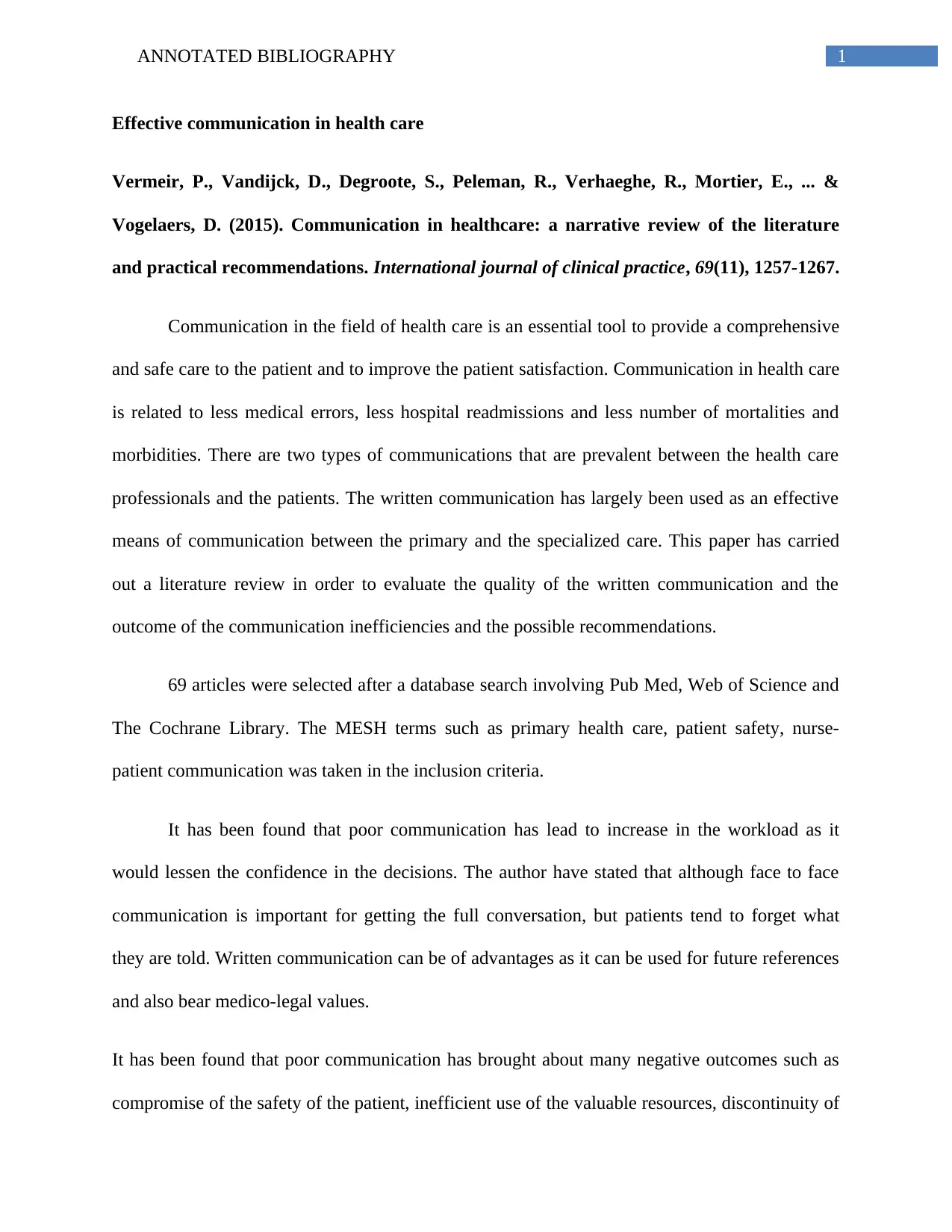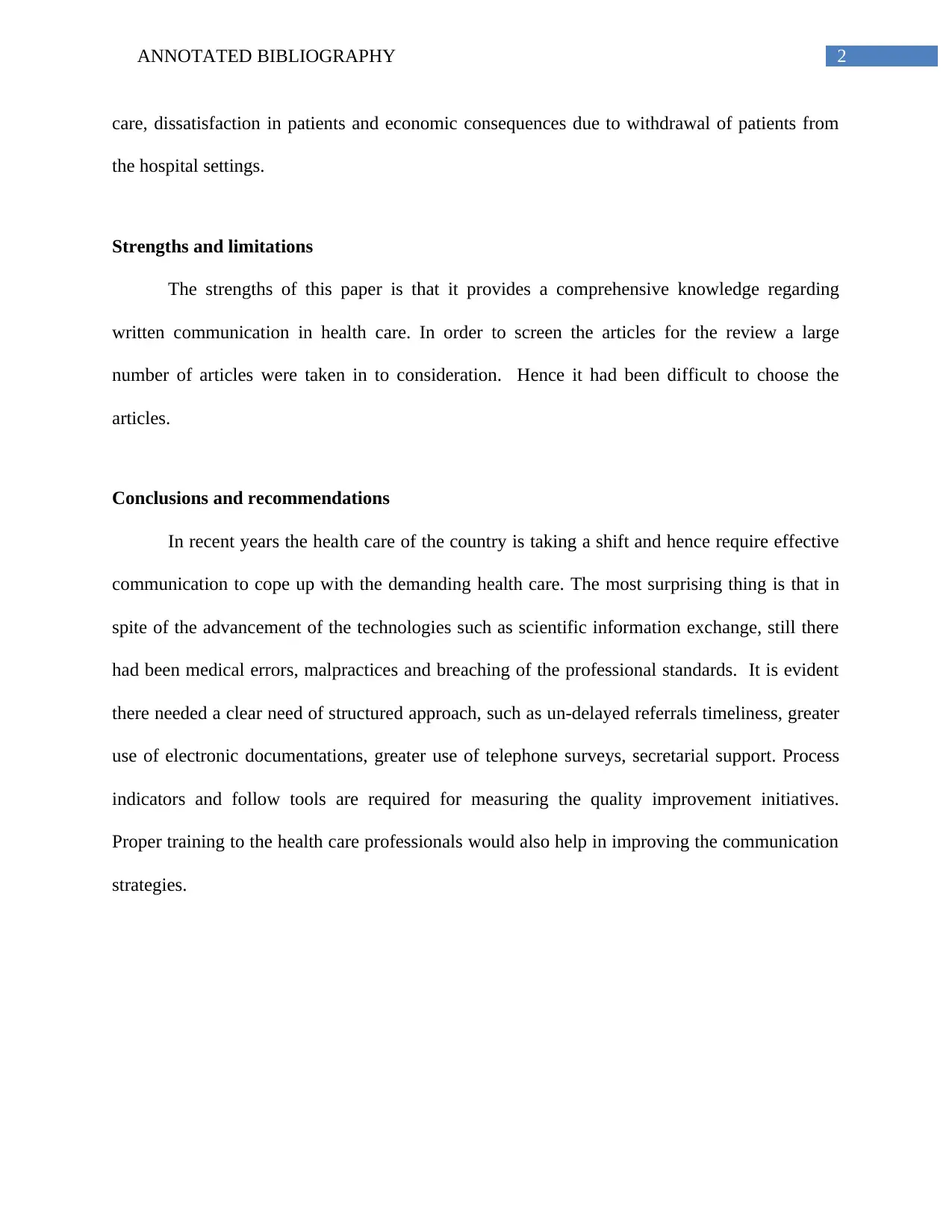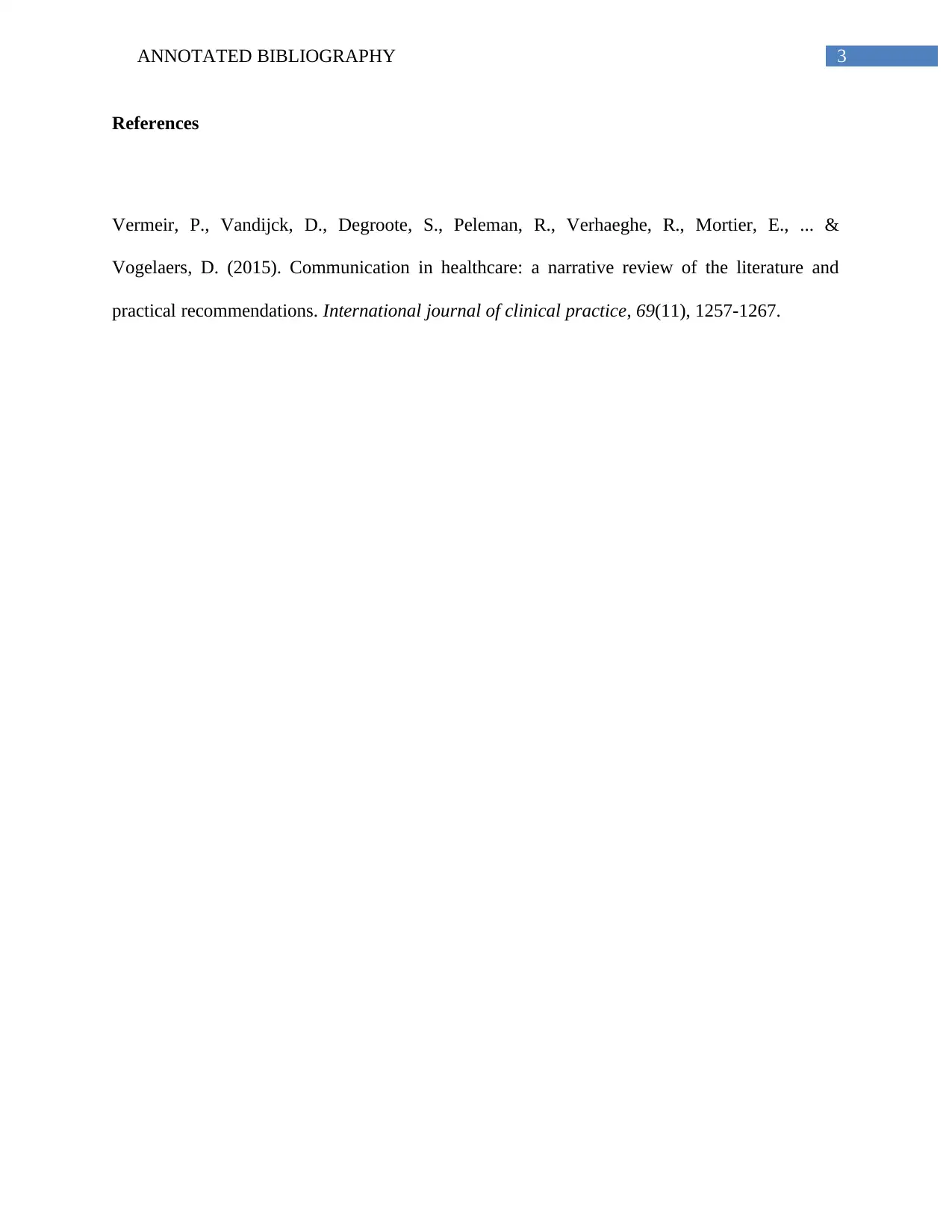NURS435 Nursing Practicum: Annotated Bibliography on Communication
VerifiedAdded on 2023/06/14
|4
|616
|403
Annotated Bibliography
AI Summary
This annotated bibliography provides a review of literature on effective communication in healthcare, particularly focusing on written communication and its impact on patient safety, resource utilization, and patient satisfaction. The reviewed article emphasizes the importance of communication in reducing medical errors, hospital readmissions, and mortality rates. It evaluates the quality of written communication, outcomes of communication inefficiencies, and potential recommendations for improvement. The bibliography highlights the strengths of the reviewed article, including its comprehensive knowledge of written communication in healthcare, while also acknowledging limitations such as the difficulty in selecting articles due to the large number considered. The conclusion underscores the need for structured approaches, such as timely referrals, electronic documentation, and telephone surveys, along with proper training for healthcare professionals to enhance communication strategies. Desklib offers this and many other solved assignments to aid students in their studies.
1 out of 4











![[object Object]](/_next/static/media/star-bottom.7253800d.svg)